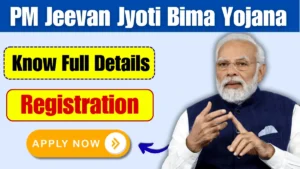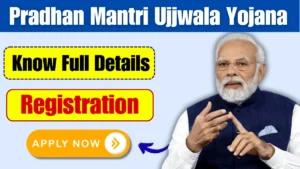In a world where access to quality healthcare often depends on financial capacity, the Pradhan Mantri Jan Arogya Yojana (PMJAY) stands as a beacon of hope for millions. This ambitious scheme aims to provide comprehensive health coverage to low-income families across India, ensuring that everyone has the opportunity to lead a healthy life,
free from the burden of medical expenses. In this blog post, we’ll explore the various facets of PMJAY, offering insights and practical advice for potential beneficiaries, financial advisors, and government officials alike.
Introduction to PMJAY
The Pradhan Mantri Jan Arogya Yojana, also known as Ayushman Bharat, was launched in September 2018 by the Government of India. Its primary objective is to provide health insurance coverage to economically vulnerable families, offering them access to secondary and tertiary healthcare services. Targeted at the poorest 40% of the population, PMJAY is designed to cover over 500 million individuals, making it the world’s largest healthcare scheme.
By bridging the gap between healthcare needs and financial capability, PMJAY strives to reduce the out-of-pocket expenditure that often forces families into debt or compromises their well-being. This revolutionary initiative is a step towards achieving universal health coverage in India, ensuring that even the most marginalized sections of society can receive timely and quality medical care.
For low-income families, PMJAY serves as a lifeline, granting them access to a wide range of medical services without the fear of financial strain. Meanwhile, financial advisors and government officials play a crucial role in facilitating enrollment and ensuring that eligible individuals can fully benefit from the scheme. Through a collective effort, PMJAY aims to transform India’s healthcare landscape, making it more inclusive and equitable.
Eligibility and Enrollment
Understanding the eligibility criteria for PMJAY is essential for families hoping to benefit from the scheme. Primarily, the program targets poor and vulnerable families based on the Socio-Economic Caste Census (SECC) 2011 data. It includes households that face significant socio-economic disadvantages, such as those without shelter, living on alms, or belonging to scheduled castes and tribes.
To enroll in PMJAY, eligible families do not need to apply separately. Instead, they are automatically included based on their SECC data. However, individuals can verify their eligibility through the official PMJAY website or mobile applications, providing their mobile number or ration card details for authentication. It’s crucial for potential beneficiaries to stay informed about any updates or changes in the enrollment process.
Recent efforts have focused on expanding the scope of PMJAY, reaching more beneficiaries through awareness campaigns and simplified enrollment procedures. Government officials and financial advisors are key players in this process, ensuring that eligible families are aware of the scheme and guiding them through the necessary steps to access healthcare services. By streamlining enrollment and enhancing outreach, PMJAY seeks to maximize its impact and reach every household in need.
Coverage and Benefits
PMJAY offers an extensive range of healthcare services, aiming to address diverse medical needs and conditions. Beneficiaries are entitled to cashless treatment in empaneled hospitals, covering expenses related to hospitalization, surgery, diagnostics, and medicines. With a coverage of up to INR 5 lakh per family per year, PMJAY provides financial protection against catastrophic health expenditures.
The scheme includes over 1,500 medical procedures, ranging from common treatments to specialized surgeries and critical care. This comprehensive coverage ensures that families can access necessary healthcare services without worrying about costs. Additionally, PMJAY emphasizes preventive care, promoting regular check-ups and early diagnosis to mitigate severe health issues.
For many low-income families, PMJAY represents a significant improvement in their ability to access quality healthcare. By eliminating financial barriers, the scheme empowers individuals to seek timely medical attention, ultimately improving health outcomes and enhancing overall well-being. The widespread acceptance of PMJAY by healthcare providers further strengthens its impact, ensuring a broad network of facilities where beneficiaries can receive treatment.
Impact and Success Stories
Since its inception, PMJAY has made a tangible difference in the lives of countless individuals and communities across India. Success stories abound, showcasing how the scheme has alleviated financial burdens and improved access to medical care for those who need it most. From life-saving surgeries to essential treatments for chronic conditions, PMJAY has emerged as a powerful tool for health equity.
Consider the case of a rural family in Uttar Pradesh, whose breadwinner required heart surgery but lacked the means to afford it. Through PMJAY, they accessed top-tier medical care without incurring debt, allowing the family to focus on recovery rather than financial stress. Such stories highlight the transformative power of PMJAY in bridging healthcare gaps and delivering hope to vulnerable populations.
Communities have also witnessed positive changes, with improved health indicators and reduced mortality rates attributed to increased access to quality healthcare services. By addressing the root causes of health disparities, PMJAY contributes to a healthier society, fostering economic growth and social development. The scheme’s success demonstrates the potential of well-designed government initiatives to drive meaningful change and uplift marginalized communities.
Challenges and Solutions
Despite its remarkable achievements, PMJAY faces several challenges that hinder its full potential. One significant issue is the uneven distribution of healthcare facilities, with rural areas often lacking adequate infrastructure and resources. This disparity affects the availability of services for beneficiaries in remote regions, limiting their access to timely care.
To address this challenge, stakeholders must invest in strengthening healthcare infrastructure, particularly in underserved areas. Collaborations between the government, private sector, and non-governmental organizations can facilitate the establishment of new facilities and enhance existing ones. Additionally, leveraging technology and telemedicine can bridge geographical gaps, bringing healthcare services closer to remote communities.
Another challenge is ensuring sufficient awareness and understanding of PMJAY among eligible families. Many beneficiaries remain unaware of the scheme’s benefits or encounter difficulties during the enrollment process. Enhanced outreach efforts, including community engagement and information campaigns, can address this issue. Financial advisors and government officials play a vital role in disseminating information and assisting families in navigating the complexities of the scheme.
How to Leverage PMJAY
For low-income families, leveraging the full potential of PMJAY requires a proactive approach. Staying informed about the scheme’s features, coverage, and enrollment process is crucial. Families should regularly verify their eligibility and update their information if necessary, ensuring uninterrupted access to healthcare services.
Financial advisors can provide valuable guidance, helping beneficiaries understand the benefits of PMJAY and assisting with any necessary paperwork or documentation. Advisors can also educate families on preventive healthcare practices, empowering them to make informed decisions about their well-being. By acting as a bridge between beneficiaries and the scheme, financial advisors contribute to maximizing the impact of PMJAY.
Government officials can advocate for policy changes that enhance the efficiency and reach of PMJAY. By addressing systemic challenges and fostering partnerships with healthcare providers, officials can ensure the scheme’s sustainability and effectiveness. Their involvement in monitoring and evaluation processes can drive continuous improvements, ensuring that PMJAY remains responsive to the evolving needs of beneficiaries.
Conclusion
The Pradhan Mantri Jan Arogya Yojana represents a significant step towards achieving health equity in India. By providing comprehensive health coverage to low-income families, the scheme empowers individuals and communities to access quality medical care without financial strain. Through collaborative efforts and strategic investments, PMJAY can overcome challenges and continue to deliver on its promise of equitable healthcare for all.
For readers who wish to explore further, consider participating in community discussions, attending workshops, or engaging with organizations dedicated to healthcare access and equity. By staying informed and actively supporting initiatives like PMJAY, we can collectively contribute to a healthier and more inclusive future for all. Together, we can transform lives and create a society where everyone has the opportunity to thrive.








